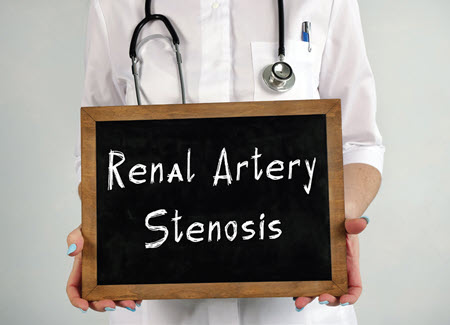Identify Key Terms in This Renal Duplex Scan Imaging Report
Will you need to modify your renal scan code choices? Find out. Choosing the correct radiology codes for imaging studies is a straightforward process, but knowing what information needs to be documented is another story. With a little practice and expert advice, however, you can give your radiology coding knowledge a boost. Examine the radiology report below to see if you can correctly code the case study. Dig out the Crucial Information From This Radiology Report The radiology report below is from a follow-up encounter for a patient diagnosed with renal artery stenosis. The patient’s physician ordered the renal artery doppler study and an ultrasound of the kidneys and bladder to evaluate for kidney damage or other renal issues. Location: Local Hospital Exam: Renal artery doppler evaluation 9/20/20XX; Renal and bladder ultrasound 9/20/20XX History: 75-year-old patient with renal artery stenosis. Diagnostic US of the kidneys ordered to check for kidney damage due to renal stenosis or other kidney issues. Diagnostic US was followed with a renal doppler study. Findings: Multiple color doppler and grayscale sonographic images of the kidneys and renal vasculature were submitted for interpretation. Right kidney measures 10.2 cm without evidence of pelvicaliectasis. A small 5 mm cyst is noted within the lower pole of the right kidney. The left kidney measures 10.1 cm with no evidence of pelvicaliectasis. The bladder appears within normal limits. Peak systolic velocity: Aorta 1.07 m/sec., Rt renal artery origin 3.0 m/sec. (0.92 resistive index), midportion rt renal artery 1.1 m/sec. (0.8 resistive index), Rt renal hilium 0.64 m/sec. (0.85 resistive index), Rt superior pole 0.22 m/sec. (0.77 resistive index), Lt renal artery origin 2.0 m/sec. (0.87 resistive index), midportion lt renal artery 0.42 m/sec. (0.80 resistive index), Lt renal hilium 0.47 m/sec. (0.82 resistive index), inferior pole 0.16 m/sec. (0.67 resistive index), midpole 0.17 m/sec. (0.63 resistive index), Lt superior pole 0.13 m/sec. (0.69 resistive index) Impression: Renal artery doppler study 1. Mild to moderate right renal artery origin stenosis. 2. Moderate left renal artery origin stenosis. Renal and bladder ultrasound 1. Bilateral probable renal cysts 2. Bladder appears normal Disclaimer: To conserve space, we consolidated the findings section of the report. In this scenario, presume the findings didn’t provide any additional information you’d need to complete your report. In a real-world coding scenario, you’d want to double-check the information in the findings against the impression to ensure there aren’t any discrepancies or contradictions between the sections. Now that you’ve had a chance to review the radiologist’s report, your next step will be to determine the correct CPT® and diagnosis codes to assign for your report. Know Where to Find Diagnostic Kidney Scans You’ll assign two CPT® codes to report the renal artery doppler scan and the renal and bladder ultrasound study. Starting with the renal artery doppler scan, turn to the CPT® Index and locate Duplex Scan. Under Duplex Scan, you’ll look for Arterial Studies > Visceral, which provides you with a code range in the Medicine/Noninvasive Vascular Diagnostic Studies section of the code set. There you’ll find two codes designated for duplex scans of the arterial inflow and venous outflow of retroperitoneal organs. You’ll assign 93976 (Duplex scan of arterial inflow and venous outflow of abdominal, pelvic, scrotal contents and/or retroperitoneal organs; limited study) to report the renal artery doppler scan, as long as the documentation supports the procedure. “When reporting a duplex scan, the documentation must indicate that a spectral analysis was performed in addition to a color doppler. Coders are looking for key terms to support these important elements of the duplex scan,” says Chelsea Kemp, RHIA, CCS, COC, CPC, CPCO, CDEO, CPMA, CRC, CCC, CEDC, CGIC, AAPC Approved Instructor, outpatient coding educator/auditor of Yale New Haven Health in New Haven, Connecticut. Several terms that indicate spectral analysis include acceleration rate, monophasic, waveform analysis, and, in this case study, peak systolic velocity. Next, you’ll turn your attention to the renal and bladder ultrasound. Return to the CPT® Index where you’ll search for Ultrasound > Kidney, which provides you with codes in the Abdomen and Retroperitoneum subsection of the Radiology section. You’ll assign 76770 (Ultrasound, retroperitoneal (eg, renal, aorta, nodes), real time with image documentation; complete) to report the renal and bladder ultrasound. Be mindful of modifiers: Both 93976 and 76770 will need modifiers appended to them to ensure correct coding. When you review the radiology report, you’ll notice that the providers performed the procedures in a local hospital. This means that the providers can only report the procedures’ professional components. “If these procedures took place in the hospital setting, the facility owns the equipment, so modifier 26 (Professional component) would be required. You would need to append modifier 26 to indicate the services performed involve the professional component only and not the technical component,” Kemp says. In short, you’ll append modifier 26 to both procedure codes. At the same time, you’ll append modifier 59 (Distinct procedural service) to 76770 to indicate the provider performed the procedure separately from the renal artery doppler scan. Sift Out the Stenosis Diagnosis Codes The radiologist listed four impressions between the two scans, but you’ll need only one diagnosis code for your claim. You’ll assign one code to report the renal stenosis. Start by opening the ICD-10-CM Alphabetic Index and search for Stenosis > artery NEC > renal, which provides you with I70.1 (Atherosclerosis of renal artery). You’ll then turn to the Tabular List to verify the code. Skip the probable diagnoses: The provider’s impressions included “bilateral probable renal cysts,” and you should not waste a minute attempting to look up a diagnosis code. According to the ICD-10-CM Official Guidelines, section IV.H, you won’t code diagnoses “documented as ‘probable’, ‘suspected,’ ‘questionable,’ ‘rule out,’ ‘compatible with,’ ‘consistent with,’ or ‘working diagnosis’ or other similar terms indicating uncertainty.” This means you’ll code any confirmed signs or symptoms, abnormal test results, or another reason for the encounter. For example, if the radiologist’s impression didn’t have a solid diagnosis, such as the renal stenosis, then you could use an abnormal finding code to support the procedures. “You cannot report the diagnosis of bilateral renal cysts because this is a probable diagnosis. However, there are ICD-10-CM codes available in chapter 18 that cover abnormal clinical and laboratory findings. Many of these codes can capture the impression when there are abnormal findings without a definitive diagnosis,” Kemp says. Wrap Up Your Report How did you do? The codes assigned for the encounter are as follows: CPT®: 93976-26, 76770-26-59 ICD-10-CM: I70.1





